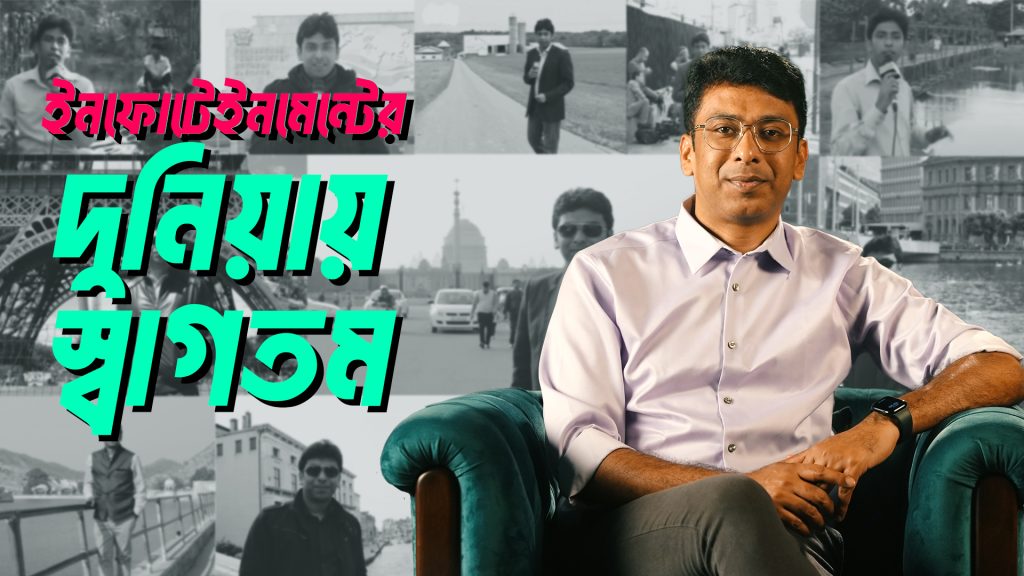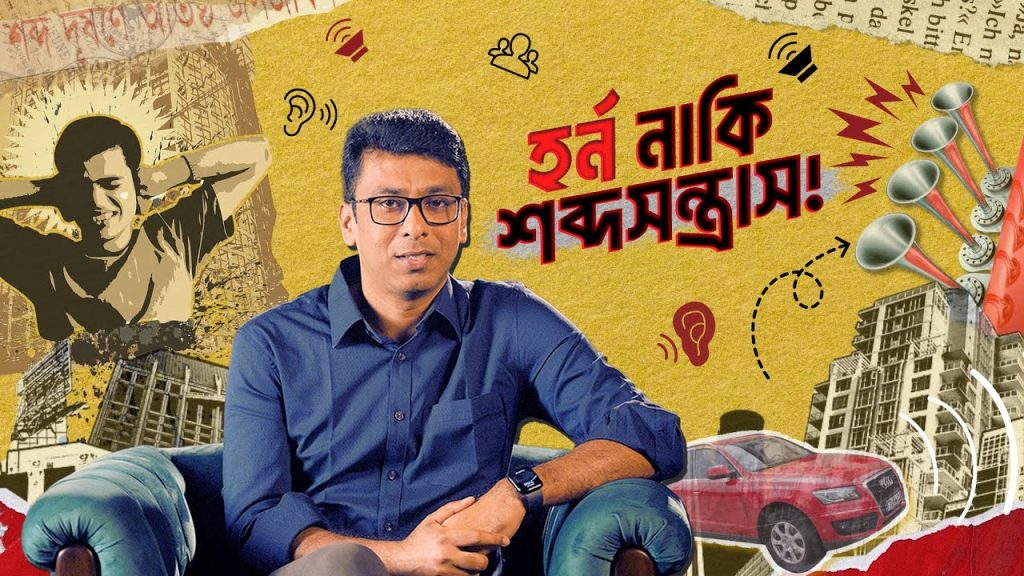সায়েন্স ফিকশন মুভিতে আমরা প্রায়ই আলট্রা-ডিজিটালাইজড শহর দেখতে পাই। হয়তো শত বছর পরে তার অনেক কিছুই বাস্তব হবে। কিন্তু বর্তমানে যদি কোনো শহরকে সাইফাই মুভির কাছাকাছি কোনো শহরের সাথেও তুলনা করা যায়, তাহলে সেটি অবশ্যই সিঙ্গাপুর সিটি।
ভবিষ্যতের শহর বলা হয় সিঙ্গাপুরকে। বিশ্বের অন্যতম আধুনিক এয়ারপোর্ট আর সমুদ্রবন্দর, চোখ ধাঁধানো আকাশছোঁয়া ভবন, অত্যাধুনিক যোগাযোগ ব্যবস্থা, মেট্রোরেল থেকে শুরু করে শহরজুড়ে জালের মতো ছড়িয়ে থাকা বিলাসবহুল এক্সপ্রেসওয়ে। শহরের প্রতিটি প্রান্তে বিশ্বের সবচেয়ে আধুনিক প্রযুক্তির ছোঁয়া। অথচ এতকিছুর পরও ইটপাথরের ভিড়ে হারিয়ে যায়নি সবুজ। খুব সচেতনভাবেই সবুজ গাছপালা দিয়ে সিঙ্গাপুর শহরটি এমনভাবেই সাজানো-গোছানো, তা যে কোনো দেশের মানুষের কাছে স্বপ্নের শহর। আর এজন্যই বাসযোগ্য আধুনিক শহরের আদর্শ মানা হয় সিঙ্গাপুরকে।
সিঙ্গাপুরের অতীত আর বর্তমানের মধ্যে বিস্তর ফারাক। প্রাকৃতিক সম্পদ কিংবা ইতিহাস, যেদিকেই তাকাই, সিঙ্গাপুরের এমন উন্নত অবস্থানে উঠে আসাটা মোটেও স্বাভাবিক নয়।
কিন্তু সিঙ্গাপুর এই অবস্থায় এলো কীভাবে?
ছোট্ট এই দ্বীপরাষ্ট্রের মোট স্থলভাগ হিসেব করলে আয়তন আমাদের ঢাকা জেলার অর্ধেকেরও কম। তবে আয়তনের তুলনায় জনসংখ্যা কিন্তু কম না, প্রায় ৫৭ লাখ। ন্যাচারাল রিসোর্সও নেই তেমন। অনেকদিক থেকেই বাংলাদেশের সাথে মিলে যাচ্ছে, তাই না? দেশটির বয়সও বাংলাদেশের কাছাকাছিই, অল্প কিছুটা বেশি। কিন্তু বর্তমান অর্থসম্পদের দিকে তাকালে এটি আবার বিশ্বের অন্যতম ধনী রাষ্ট্র।
এশিয়ান অর্থনীতির বাঘ বলেও পরিচিত দেশটি। হংকং, তাইওয়ান, দক্ষিণ কোরিয়া আর সিঙ্গাপুরকে এশিয়ার চার বাঘ বলা হয়। অথচ একসময় এ অঞ্চল পরিচিত ছিল জেলেপল্লী হিসেবে।
কিন্তু কীভাবে বদলে গেল সিঙ্গাপুর?
১৯৬৫ সালের ৯ আগস্ট মালয়েশিয়া থেকে আলাদা হয়ে নতুন রাষ্ট্র হিসেবে আত্মপ্রকাশ করে সিঙ্গাপুর। কোনো যুদ্ধ-বিদ্রোহ করে স্বাধীনতা পেতে হয়নি। বরং মালয়েশিয়া সরকার সিঙ্গাপুরকে এক রকম জোর করেই আলাদা করে দেয়। মালয়েশিয়া একরকম বোঝা হিসেবেই ধরে নিয়েছিল সিঙ্গাপুরকে।
স্বাধীনতা পাওয়ার পর সিঙ্গাপুরের নাগরিকদের বছরে মাথাপিছু আয় ছিল মাত্র ৫০০ ডলার, আর শুধু ২৫ বছরের ব্যবধানেই মাথাপিছু আয় বেড়ে হয় ৫৩ হাজার মার্কিন ডলারে দাঁড়ায়। সিঙ্গাপুরই একমাত্র দেশ যাদের একটি প্রজন্মই নিজেদের দেশকে তৃতীয় বিশ্বের দেশ থেকে উন্নত দেশে রূপান্তরিত হতে দেখেছে। বর্তমানে সিঙ্গাপুরের মাথাপিছু আয় প্রায় সাড়ে আটাশি হাজার মার্কিন ডলার, যা বাংলাদেশএর টাকায় কোটি টাকারও উপরে।
মালয়েশিয়া থেকে আলাদা হওয়ার সময় আইনজীবী লি কুয়ান ইউ ছিলেন সিঙ্গাপুরের অবিসংবাদিত রাজনৈতিক নেতা। সিঙ্গাপুরের এই ঘুরে দাঁড়ানোর নায়কও কিন্তু তিনি। ১৯২৩ সালে জন্মগ্রহণ করা লি কুয়ান ব্রিটিশ শাসনামল থেকেই রাজনীতির সাথে জড়িত হয়ে সিঙ্গাপুরের মানুষের অধিকার আদায়ে কাজ করে যাচ্ছিলেন। ১৯৬৫ সালে স্বাধীনতা লাভের পর ১৯৯০ সাল পর্যন্ত দেশটির প্রধানমন্ত্রীর দায়িত্বে ছিলেন তিনি। তার একের পর এক মাস্টারপ্ল্যানই সিঙ্গাপুরকে বদলে দেয়ার নেপথ্যে আসল ভূমিকা রেখেছে।
সাধারণ মানুষের মধ্যে দেশপ্রেম বা নিজ শহরের প্রতি ভালোবাসা জন্মানোর চমৎকার এক উদ্যোগ নিয়েছিলেন তিনি। সরকারি আবাসন প্রকল্প ‘হাউজিং অ্যান্ড ডেভেলপমেন্ট বোর্ড’ এর মাধ্যমে তিনি প্রত্যেক নাগরিকের আবাসন নিশ্চিত করেন। নিজের বাড়ি থাকায় নাগরিকদেরও শহরের প্রতি একটা ভালোবাসা তৈরি হয়, তারা শহরের যত্ন নিতে শুরু করে। আর আবাসন সমস্যারও সমাধান হয়ে যায় এর মাধ্যমে। যেহেতু চীনা, মালয় ও ভারতীয় বংশদ্ভূত মানুষদের নিয়ে একটা মিশ্র জাতি ছিল সিঙ্গাপুরে, তাই জাতিগত ঐক্য প্রতিষ্ঠায়ও আবাসন প্রকল্পটি ছিল দারুণ এক উদ্যোগ।
আবাসন ও নগরায়নের পাশাপাশি যোগাযোগ ব্যবস্থা তৈরিতেও নেন ব্যতিক্রমী উদ্যোগ, সড়কের পরিবর্তে পুরো দেশকে রেলপথে সংযুক্ত করেন। লি বুঝতে পেরেছিলেন, সহজ ও কম খরচে মানুষের দ্রুত যাতায়াত ও মালামাল পরিবহনে ট্রেনের কোনো বিকল্প নেই। বর্তমানে বিশ্বের অন্যতম আধুনিক ও দ্রুতগতির রেলসেবা কিন্তু সিঙ্গাপুরেই।
কিন্তু দিন শেষে সিঙ্গাপুর এমন একটা দেশ, যাদের না আছে কোনো ন্যাচারাল রিসোর্স, না আছে অন্য কোনো আয়ের উৎস। তাই নতুন উদ্যোক্তা যেমন তৈরি হচ্ছিলো না, বেকারত্ব সমস্যাও কাটছিলো না। লি কুয়ান দেশের অবকাঠামোগত উন্নয়নে মনোযোগ দিলেও আসল পরিবর্তনের জন্য দরকার ছিল একটা ম্যাজিকের।
সেই ম্যাজিকই ঘটে ১৯৭১ সালে। যখন মার্কিন সরকার ঘোষণা দিয়ে বসলো ডলার বিনিময়ে স্বর্ণ বিক্রি করবে না তারা। তখনই আন্তর্জাতিক বাজারে ডলার মার্কেট উন্মুক্ত হয়। আর এই মুক্ত প্রতিযোগিতায় হংকংকেও ছাড়িয়ে যায় সিঙ্গাপুর। যেহেতু মার্কিন-ঘেঁষা অর্থনীতি ও মুক্তবাজার অর্থনীতির পক্ষে ছিল সিঙ্গাপুর, তাই বিশ্বব্যাংক ও আইএমএফের আশীর্বাদও মিলে যায় সিঙ্গাপুরের ভাগ্যে।
এই আশীর্বাদে অবকাঠামোসহ লি কুয়ানের পরিকল্পনাগুলো বাস্তবায়নে অর্থনৈতিক বাধা অনেকটাই দূর হয়ে যায়। শুরু হয় একের পর এক মাস্টারপ্ল্যানের বাস্তবায়ন। লি কুয়ান বিদেশি কোম্পানিগুলোকে বিনিয়োগে আগ্রহী করতে ট্যাক্স কমিয়ে দেন অনেক।
একদিকে সিঙ্গাপুরের যোগাযোগ ব্যবস্থা ভালো, রাজনৈতিক স্থিতিশীলতা আছে। পাশাপাশি তাদের সমুদ্রবন্দর থেকে এশিয়ার যে কোনো দেশে মালামাল পাঠানো সহজ। এসব বিষয় মাথায় রেখে প্রেসিডেন্ট লি কুয়ান সিঙ্গাপুরের সমুদ্রবন্দর আর বিমানবন্দর ব্যবস্থাকে পুরোপুরি ঢেলে সাজান। অত্যাধুনিক সুযোগ-সুবিধাসহ পর্যটক-আকর্ষণীয় করে তুলতে দেশে যা যা করা দরকার সবই করেছেন লি কুয়ান।
ফলাফলও এলো হাতেনাতে। অল্প সময়েই সিঙ্গাপুর পরিণত হলো এয়ারলাইন্সগুলোর এশিয়ান ট্রানজিট হাবে।
চমৎকার যোগাযোগ ব্যবস্থা ও প্রতিনিয়ত পর্যটকদের আনাগোনায় সব বিখ্যাত কোম্পানিগুলো সিঙ্গাপুরের প্রতি আগ্রহী হয়ে ওঠে, সাথে সিঙ্গাপুর সরকারের স্বল্প করের টোপ তো আছেই। বিখ্যাত সব টেক কোম্পানি তাদের অফিস করতে লেগে পড়ে সিঙ্গাপুরে। বর্তমানে গুগল, ফেসবুক, টয়োটা, শেভরন, পেপসিকোসহ এমন কোনো বড় বৈশ্বিক কোম্পানি নেই, যাদের আঞ্চলিক সদরদপ্তর সিঙ্গাপুরে নেই।
সরাসরি এসব বিনিয়োগের পাশাপাশি সিঙ্গাপুর সরকার শিক্ষাখাতে ব্যাপক বিনিয়োগ করে। শিক্ষকদের উচ্চবেতনের পাশাপাশি মেধাবী শিক্ষার্থীদের দেশের বাইরের বিশ্ববিদ্যালয়ে পড়তে যাওয়ার জন্য স্কলারশিপ দিতে থাকে। শর্ত একটাই, ডিগ্রি অর্জন করে দেশে ফিরতে হবে এবং দেশে অন্তত দুই বছর চাকরি করতে হবে। এর ফলে দেশের মেধাবীরা উচ্চশিক্ষার সুযোগ যেমন পাচ্ছে, তেমনি দেশের মেধা দেশেই থেকে যাচ্ছে।
এক প্রকার বোঝা মনে করে সিঙ্গাপুর নামে যে ভূখণ্ডকে মালয়েশিয়া আলাদা করে দিয়েছিল, সেই সিঙ্গাপুর এখন হয়ে উঠেছে ওয়ার্ল্ড সেকেন্ড বিগেস্ট বিজনেস কান্ট্রি। দক্ষ নেতৃত্ব ও সঠিক পরিকল্পনাতেই সিঙ্গাপুরের এই উত্থান। আমরা বাংলাদেশের উন্নয়নের পথে- ন্যাচারাল রিসোর্সের অভাব, অতিরিক্ত জনসংখ্যা, দুর্নীতি, মেধাবীদের সুযোগের অভাবকে দায়ী করে গা বাঁচিয়ে চলি। কিন্তু এই সব কয়টি সমস্যা ওভারকাম করেই সিঙ্গাপুর আজকের অবস্থানে এসেছে। এভাবে যদি ভাবি, বাংলাদেশকেও বদলে ফেলা অসম্ভব কিছু না, প্রয়োজন শুধু সময়োপযোগী যথাযথ পরিকল্পনা ও তার বাস্তবায়ন।
ধন্যবাদ সবাইকে।
সুস্থ থাকুন, ভালো থাকুন।
In sci-fi movies, we often see ultra-modern, digitalized cities. Maybe in a hundred years, those futuristic visions will come true. But today, if there’s one city that already feels like it’s out of a sci-fi film, it’s Singapore.
Singapore is often called the city of the future. It has one of the most advanced airports in the world, stunning skyscrapers, a modern transportation system, and a network of expressways covering the entire city. Each corner of the city has a touch of the world’s most modern technology. But, despite all of this, green spaces haven’t disappeared. Singapore is thoughtfully designed with greenery, making it a dream city for anyone. This is why Singapore is considered a model of a livable, modern city.
There is a huge difference between Singapore’s past and present. Whether we look at natural resources or history, it’s not at all normal for Singapore to have reached such a developed state.
But how did Singapore get here?
This small island nation has less land area than half of Dhaka district. However, it has a population of around 5.7 million, quite high for its size. It also doesn’t have many natural resources. In many ways, it is similar to Bangladesh, isn’t it? Even in terms of age, it’s close to Bangladesh, just a little older. But looking at its current wealth, it’s one of the richest countries in the world.
It’s called one of the “Asian Tigers” of the economy. Hong Kong, Taiwan, South Korea, and Singapore are known as Asia’s four tigers. Yet, this region was once just a fishing village.
So, how did Singapore transform?
On August 9, 1965, Singapore became a new nation, separating from Malaysia. It didn’t gain independence through war or revolution. Instead, Malaysia forced Singapore to separate. Malaysia saw Singapore as more of a burden.
After independence, the per capita income of Singaporeans was only $500 a year. But within just 25 years, it rose to $53,000. Singapore is the only country where a single generation has seen it transform from a third-world to a first-world country. Currently, Singapore’s per capita income is around $88,000, which is over a million Bangladeshi taka.
At the time of separation from Malaysia, lawyer Lee Kuan Yew was Singapore’s undisputed political leader. He was also the hero behind Singapore’s rise. Born in 1923, Lee Kuan was active in politics during British rule, fighting for Singaporean rights. After independence in 1965, he served as Prime Minister until 1990. His series of master plans played the key role in transforming Singapore.
Lee took an incredible initiative to make ordinary people love their city. Through a government housing project called the Housing and Development Board (HDB), he ensured every citizen had a home. When people own their homes, they start caring about the city. And this also solved the housing problem. Since Singapore’s population consisted of Chinese, Malay, and Indian backgrounds, the housing project also helped build racial harmony.
Besides housing and urbanization, Lee also took unique steps in transportation. Instead of focusing on roads, he connected the entire country by rail. Lee understood that for cheap and quick transport of people and goods, trains were unbeatable. Today, Singapore has one of the world’s most modern and fast rail services.
But Singapore is a country with no natural resources and no other sources of income. There weren’t enough new entrepreneurs, and unemployment was still a problem. While Lee Kuan focused on infrastructure, Singapore needed a “magic” for real change.
That magic came in 1971, when the U.S. government announced it would no longer sell gold in exchange for dollars. This opened up the global dollar market. And in this open competition, Singapore surpassed even Hong Kong. Since Singapore supported both a pro-American and free-market economy, it also got blessings from the World Bank and IMF.
With this support, the financial barriers to Lee Kuan’s plans reduced, leading to a series of successful master plans. Lee Kuan lowered taxes to attract foreign companies to invest.
On one side, Singapore had a strong transportation system and political stability. Its seaport made it easy to send goods to any Asian country. Keeping this in mind, Lee Kuan restructured Singapore’s ports and airports with all the modern amenities to attract tourists and investors.
The results were immediate. Singapore quickly became Asia’s transit hub for airlines.
Due to excellent transportation and continuous inflow of tourists, all major companies became interested in Singapore, aided by its low-tax advantage. Major tech companies began setting up offices in Singapore. Today, companies like Google, Facebook, Toyota, Chevron, and PepsiCo all have regional headquarters in Singapore.
Besides direct investments, Singapore’s government also invested heavily in education. It offered high salaries to teachers and provided scholarships to bright students to study abroad, with one condition: after their degree, they had to return and work in Singapore for at least two years. This allowed students to gain higher education and keep their talents within the country.
Once a region that Malaysia separated as a “burden,” Singapore has now become the world’s second-largest business country. Singapore’s rise is a result of strong leadership and well-thought-out plans. In Bangladesh, we often blame the lack of natural resources, overpopulation, corruption, and lack of opportunities for talented people as excuses to not progress. But Singapore has overcome all these problems to reach where it is today. If we think like this, transforming Bangladesh is not impossible either. All we need are timely, proper plans and their implementation.
Thank you, everyone. Stay well, stay healthy.


“Great content, learned a lot from this post!”